Rachel Ruysch, Flower Still-Life
What would you consider today’s most coveted status symbols? A Mercedes or a Ferrari, a diamond Rolex or a designer handbag? A European villa? In Rachel Ruysch’s day it was a simple tulip. Looking at her floral still life paintings can reveal an entire hidden world—of wealth, status, even the economics of the world’s first financial crises.
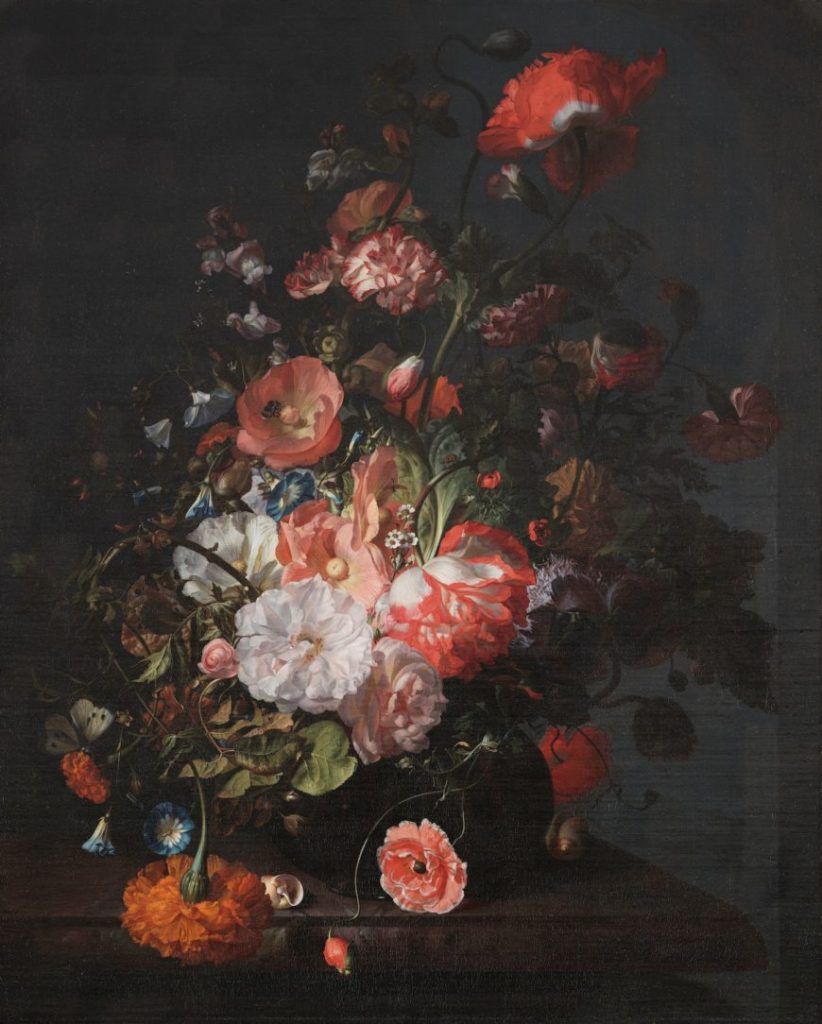
Growing up: art and science
Rachel Ruysch grew up in Amsterdam, into a wealthy and prominent family of Dutch artists, architects and scientists. Her father, Frederik Ruysch, was an eminent scientist and professor of anatomy and botany. He possessed a well-known collection of rare natural history specimens, which Rachel helped catalogue and record. He encouraged her artistic talents, careful observation of the natural world and scientifically accurate renderings of plants and flowers.
Flowers: A national passion
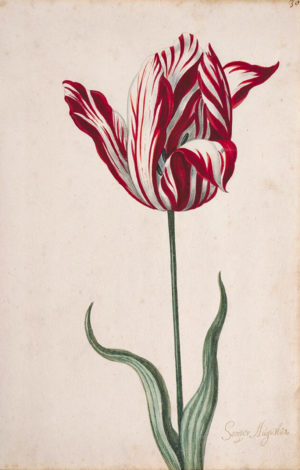
Ruysch’s career paralleled the growth of the Dutch horticultural industry and the science of botany. The Netherlands became the largest importers of new and exotic plants and flowers from around the world. Once valued primarily for their use as herbs or medicine, flowers became newly appreciated simply for their beauty and fragrance. They became prized luxuries and desirable status symbols for the wealthy. Botanists and gardeners sought the rarest specimens imported from overseas trade. The tulip, like the one featured prominently in Ruysch’s painting below, was the most exotic.
“Tulip mania”
Coveted for their intense and unusually varied colors, tulips were introduced into the Netherlands from Turkey in the late sixteenth century. The Dutch fell madly in love with them. Because it takes so long for a tulip to be grown from seed, demand far outpaced supply. The rarest and most valuable tulips were the variegated or “flamed” tulips, those with feathers of contrasting color on their petals. This exotic coloration was actually caused by a virus that infected the tulip, shortening its life span and making it even more sought after and valuable. The stage was set for a buying craze.
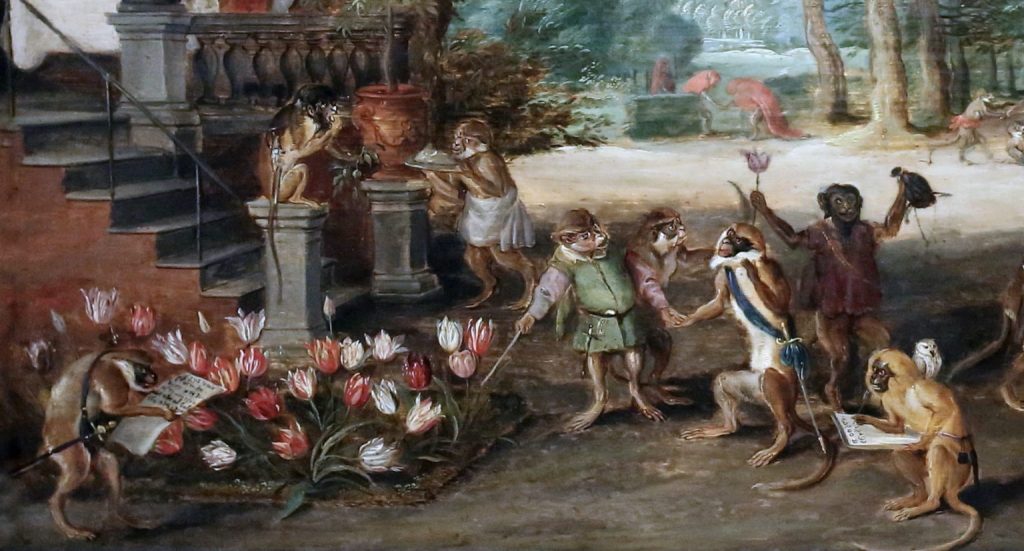
Buyer beware: a cautionary tale?
The word tulip mania is often used today to refer to certain types of economic crises. It describes a financial bubble caused by large numbers of people speculating on unproved commodities or companies. Tulip bulbs were so avidly desired in the seventeenth-century Netherlands that a “futures market” was born. Buyers bought bulbs still in the ground, speculating that they would be worth more in the future and could then be sold for a large profit. Prices rose steadily and irrationally. At the peak of tulip speculation in 1636, some bulbs sold for more than a skilled craftsman earned in ten years. A nursery catalog of the time notes that at the height of the madness, a rare “Semper Augustus” tulip sold for 5,200 guiders, more than the price of a fine house, a ship or twelve acres of land.
In February, 1637, investors suddenly decided that tulip bulbs were grossly overpriced, and began to sell. Within days, panic ensued. With more sellers than buyers, demand for tulips evaporated. Prices plummeted, tulip bulbs lost 90% of their earlier value, and the market crashed. The world had just experienced its first financial bubble.
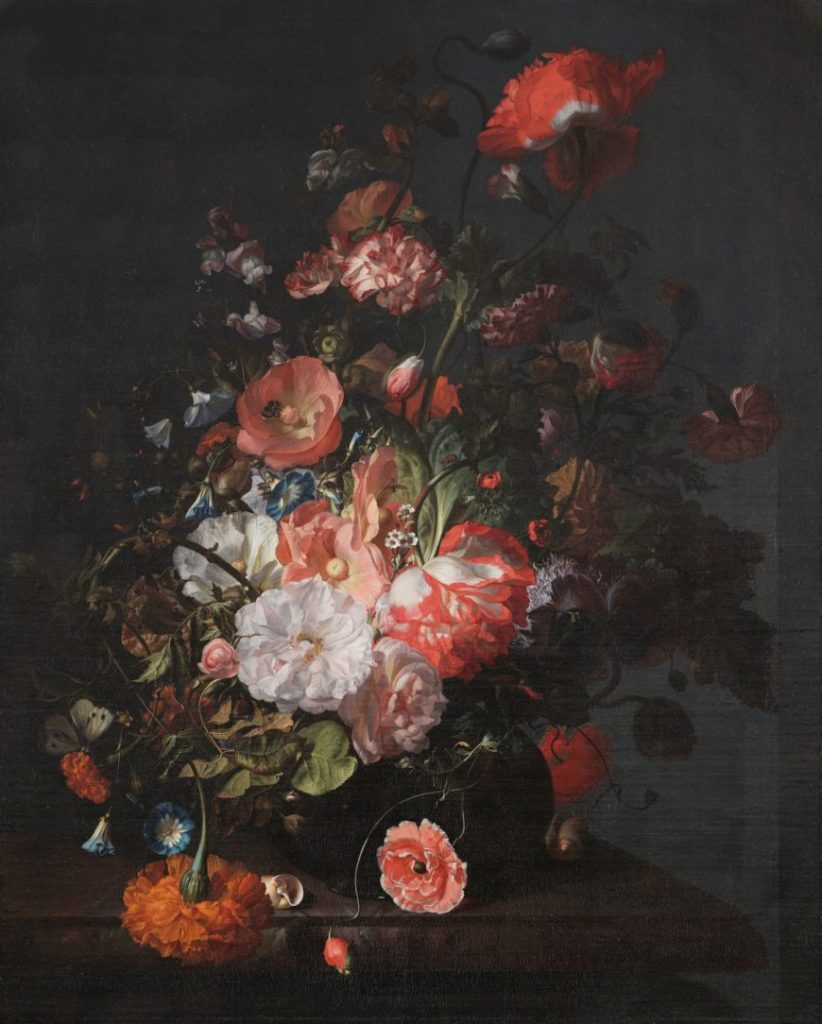
Look closely: microscopic detail
A successful Dutch still life painting was highly valued for its degree of skillful realism. Flower Still Life depicts a profusion of scientifically accurate floral details. Each petal, stem, and leaf is minutely and precisely rendered. Textures are remarkably realistic, from the delicate paper thin poppy petals to the crinkly, brittle leaves. Looking closer still, we see that Ruysch has also meticulously depicted tiny insects: a caterpillar crawls on a stem, a bee gathers pollen from the center of a poppy, a white butterfly alights on a marigold.
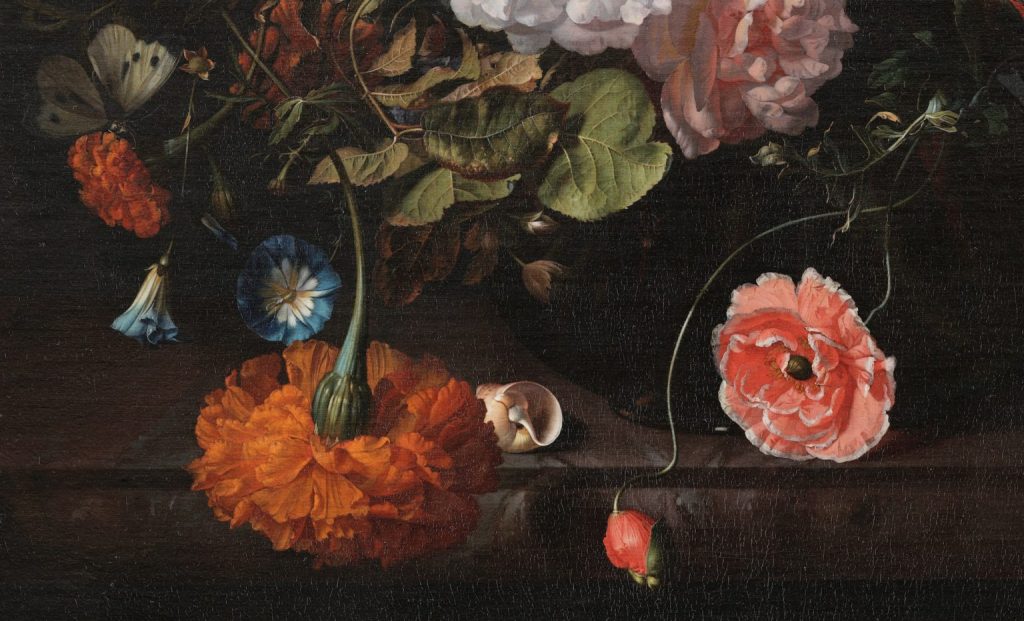
“Vanitas”: hidden meanings?
Flower Still Life depicts a lush variety of different flowers, from popular common European blooms to rare overseas species. Ruysch combines a complex and intricate arrangement of poppies, snapdragons, roses, carnations, hollyhocks, marigolds, morning glories, and a single red and white flamed tulip.
One common interpretation is to understand this work in light of vanitas, a moral message common at the time. Taken from a passage in the Christian bible, it was a reminder that beauty fades and all living things must die. While still life paintings celebrated the beauty and luxury of fine food or voluptuous flowers, vanitas was a warning about the fleeting nature of these material things and the shortness of life. In Flower Still Life, some flowers wilt and die while insects have eaten holes in the leaves. Wealthy Dutch consumers were being reminded to not become too attached to their material possessions and worldly pleasures; eternal salvation came only through devotion to God.[1]
- Lynn Robinson, "Rachel Ruysch, Flower Still-Life," in Smarthistory, August 8, 2015, https://smarthistory.org/ruysch-flower-still-life/ ↵

